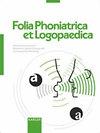Neuromuscular Electrical Stimulation in Conjunction with Conventional Swallowing Therapy in the Treatment of Dysphagia Caused by Multiple Sclerosis: A Single-Case Experimental Design.
IF 0.7
4区 医学
Q3 AUDIOLOGY & SPEECH-LANGUAGE PATHOLOGY
引用次数: 0
Abstract
Introduction: Dysphagia as a consequence of multiple sclerosis (MS) puts individuals at higher risk of dehydration, malnutrition, and aspiration pneumonia. This study intended to investigate the effects of a combined program of neuromuscular electrical stimulation (NMES) and conventional swallowing therapy to improve swallow safety and efficiency, oral intake, and physical, emotional, and functional impacts of dysphagia in people with dysphagia and MS. Methods: In this single-case experimental study with ABA design, two participants with dysphagia caused by MS underwent 12 sessions therapy during 6 weeks following a baseline of 4 evaluation sessions. They were evaluated 4 more times in the follow-up phase after therapy sessions. Scores of Mann Assessment of Swallowing Ability (MASA), DYsphagia in MUltiple Sclerosis (DYMUS), and timed test of swallowing capacity were obtained at baseline, during treatment, and in the follow-up phases. The Dysphagia Outcome and Severity Scale (DOSS) based on videofluoroscopic swallow studies, Persian-Dysphagia Handicap Index (Persian-DHI), and Functional Oral Intake Scale (FOIS) were also completed before and after treatment. Visual analysis and percentage of nonoverlapping data were calculated. Results: MASA, DYMUS, FOIS, and DHI scores indicated significant improvement in both participants. Although the scores of the timed test of swallowing capacity in participant 1 (B.N.) and DOSS in participant 2 (M.A.) showed no changes, considerable improvements including reducing the amount of residue and the number of swallows required to clear bolus were seen in the posttreatment videofluoroscopic records of both participants. Conclusion: NMES in conjunction with conventional dysphagia therapy based on motor learning principles could improve the swallowing function and decrease disabling effects of dysphagia on different aspects of life in participants with dysphagia caused by MS.神经肌肉电刺激联合常规吞咽疗法治疗多发性硬化症吞咽困难:一个单一病例的实验设计。
引言:多发性硬化症(MS)导致的吞咽困难使个体面临更高的脱水、营养不良和吸入性肺炎风险。本研究旨在研究神经肌肉电刺激(NMES)和传统吞咽治疗的联合方案对改善吞咽困难和MS患者吞咽安全性和效率、口腔摄入以及吞咽困难对身体、情绪和功能的影响的效果。方法:在这项采用ABA设计的单例实验研究中,两名患有MS引起的吞咽困难的参与者在4个评估疗程的基线之后的6周内接受了12个疗程的治疗。在治疗后的随访阶段,他们又接受了4次评估。在基线、治疗期间和随访阶段获得Mann吞咽能力评估(MASA)、多发性硬化症吞咽困难(DYMUS)和吞咽能力定时测试的分数。基于视频透视吞咽研究的吞咽困难结果和严重程度量表(DOSS)、波斯吞咽困难障碍指数(波斯DHI)和功能性口腔摄入量表(FOIS)也在治疗前后完成。计算了视觉分析和不重叠数据的百分比。结果:MASA、DYMUS、FOIS和DHI评分显示两名参与者均有显著改善。尽管参与者1(B.N.)的吞咽能力定时测试和参与者2(M.A.)的DOSS的得分没有变化,但在两名参与者的治疗后视频荧光镜记录中都看到了相当大的改善,包括减少了残渣量和清除团块所需的吞咽次数。结论:NMES与基于运动学习原理的传统吞咽困难治疗相结合,可以改善MS引起的吞咽困难参与者的吞咽功能,减少吞咽困难对生活各个方面的致残影响。
本文章由计算机程序翻译,如有差异,请以英文原文为准。
求助全文
约1分钟内获得全文
求助全文
来源期刊

Folia Phoniatrica et Logopaedica
AUDIOLOGY & SPEECH-LANGUAGE PATHOLOGY-OTORHINOLARYNGOLOGY
CiteScore
2.30
自引率
10.00%
发文量
28
审稿时长
>12 weeks
期刊介绍:
Published since 1947, ''Folia Phoniatrica et Logopaedica'' provides a forum for international research on the anatomy, physiology, and pathology of structures of the speech, language, and hearing mechanisms. Original papers published in this journal report new findings on basic function, assessment, management, and test development in communication sciences and disorders, as well as experiments designed to test specific theories of speech, language, and hearing function. Review papers of high quality are also welcomed.
 求助内容:
求助内容: 应助结果提醒方式:
应助结果提醒方式:


